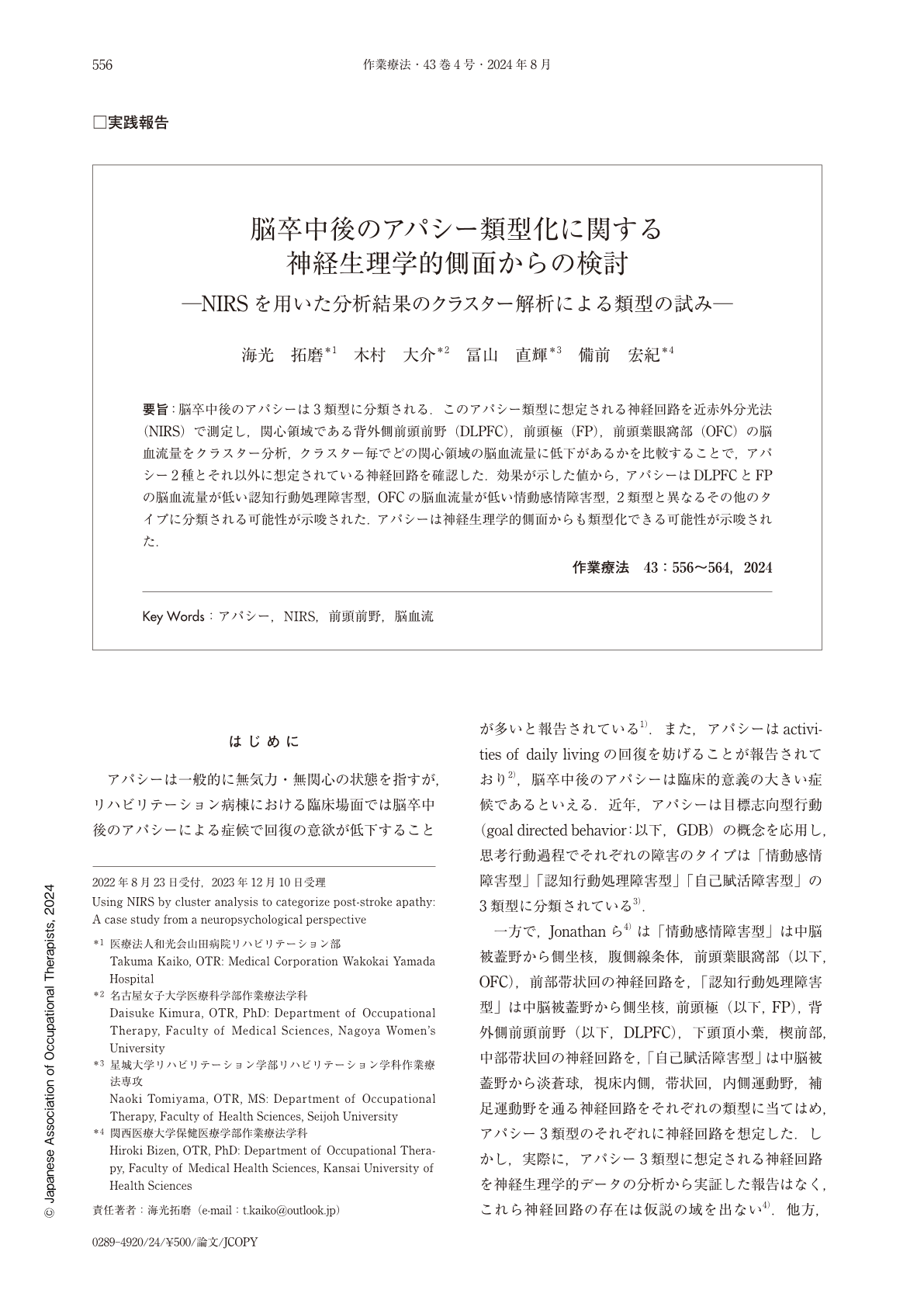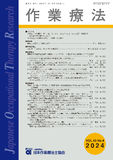Japanese
English
- 販売していません
- Abstract 文献概要
- 1ページ目 Look Inside
- 参考文献 Reference
要旨:脳卒中後のアパシーは3類型に分類される.このアパシー類型に想定される神経回路を近赤外分光法(NIRS)で測定し,関心領域である背外側前頭前野(DLPFC),前頭極(FP),前頭葉眼窩部(OFC)の脳血流量をクラスター分析,クラスター毎でどの関心領域の脳血流量に低下があるかを比較することで,アパシー2種とそれ以外に想定されている神経回路を確認した.効果が示した値から,アパシーはDLPFCとFPの脳血流量が低い認知行動処理障害型,OFCの脳血流量が低い情動感情障害型,2類型と異なるその他のタイプに分類される可能性が示唆された.アパシーは神経生理学的側面からも類型化できる可能性が示唆された.
Apathy after stroke can be classified into three types based on thought-behavior processes. We studied the neural circuits of three types of apathy using near infrared spectroscopy (NIRS) and analyzed the cerebral blood flow in the regions of interest (DLPFC, FP, and OFC) by cluster analysis. We confirmed the expected neural circuits for the three types of apathy by comparing which regions of interest showed reduced cerebral blood flow in each cluster. The results showed that apathy was categorized into some clusters: DLPFC and FP, with low cerebral blood flow and impaired cognitive-behavioral processing; OFC, with low cerebral blood flow, impaired affective processing, and emotional disturbance; and other types which did not fall into either of these categories. These analyses indicated that apathy following stroke can be categorized into some types from a neuropsychological perspective.

Copyright © 2024, Japanese Association of Occupational Therapists. All rights reserved.


